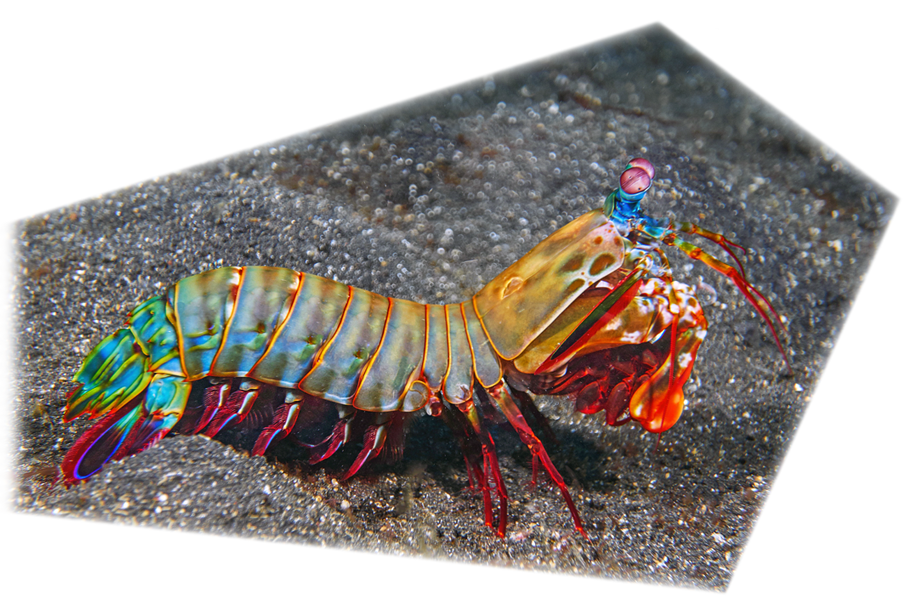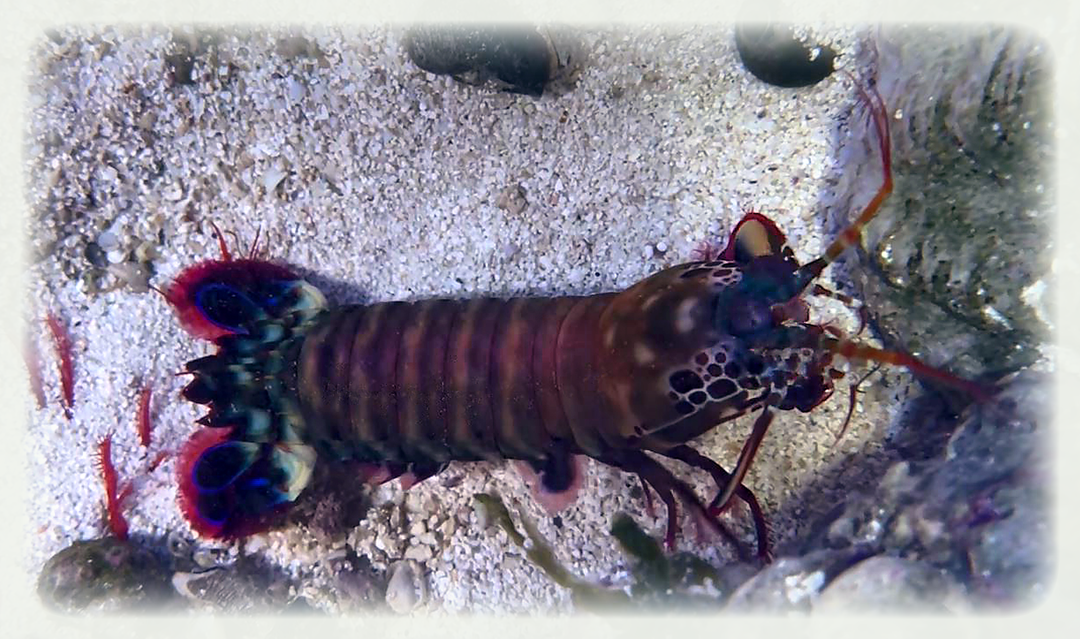
The Mantis Shrimp, or stomatopods, are carnivorous marine crustaceans that branch from the class of Malacostraca from about 340 million years ago! They come in various shades from brown to vividly bright colors - with over 450 species of mantis shrimps being known. They are well-recognized for their powerful punch (often likened to the velocity of a .22 caliber bullet) using their raptorials that are utilized to attack and kill prey. Some have dactyl "clubs" specifically for maximum force in their strikes, or sharp forelimbs for capturing their food. Thus, the common name of "mantis" shrimp!
While fairly aggressive and typically solitary, these sea creatures will spend much of their time hiding or burrowing. 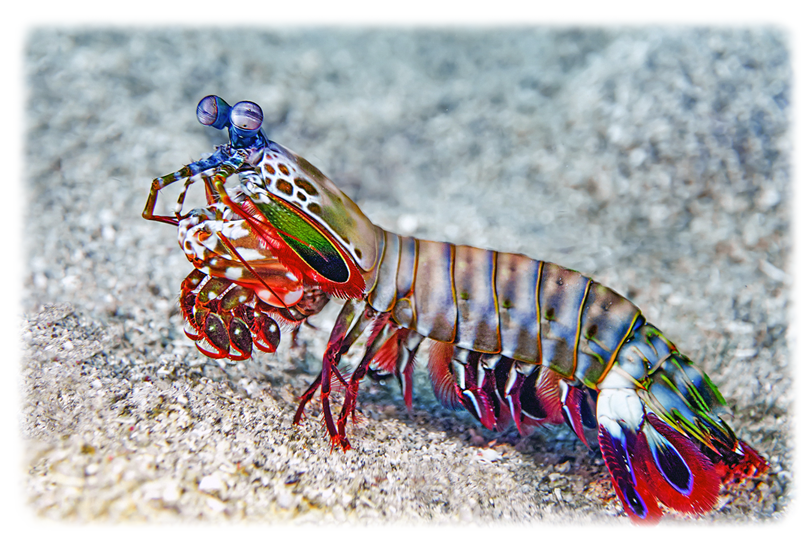 However, the mantis shrimp is built for hunting, and is highly adapted for close-range combat, making them fascinating to observe! The appendage differences divide mantis shrimp into two main types: those that hunt by impaling their prey with spear-like structures and those that smash prey with a powerful blow from a heavily, hammer/club-like appendage. Both types strike by rapidly unfolding and swinging their raptorial claws at the prey, and can inflict serious damage on victims significantly greater in size than themselves! In "smashers" these two weapons are employed with blinding quickness, with an acceleration of 335,000 ft/s2 and speeds of around 51 mph from a standing start.
However, the mantis shrimp is built for hunting, and is highly adapted for close-range combat, making them fascinating to observe! The appendage differences divide mantis shrimp into two main types: those that hunt by impaling their prey with spear-like structures and those that smash prey with a powerful blow from a heavily, hammer/club-like appendage. Both types strike by rapidly unfolding and swinging their raptorial claws at the prey, and can inflict serious damage on victims significantly greater in size than themselves! In "smashers" these two weapons are employed with blinding quickness, with an acceleration of 335,000 ft/s2 and speeds of around 51 mph from a standing start.
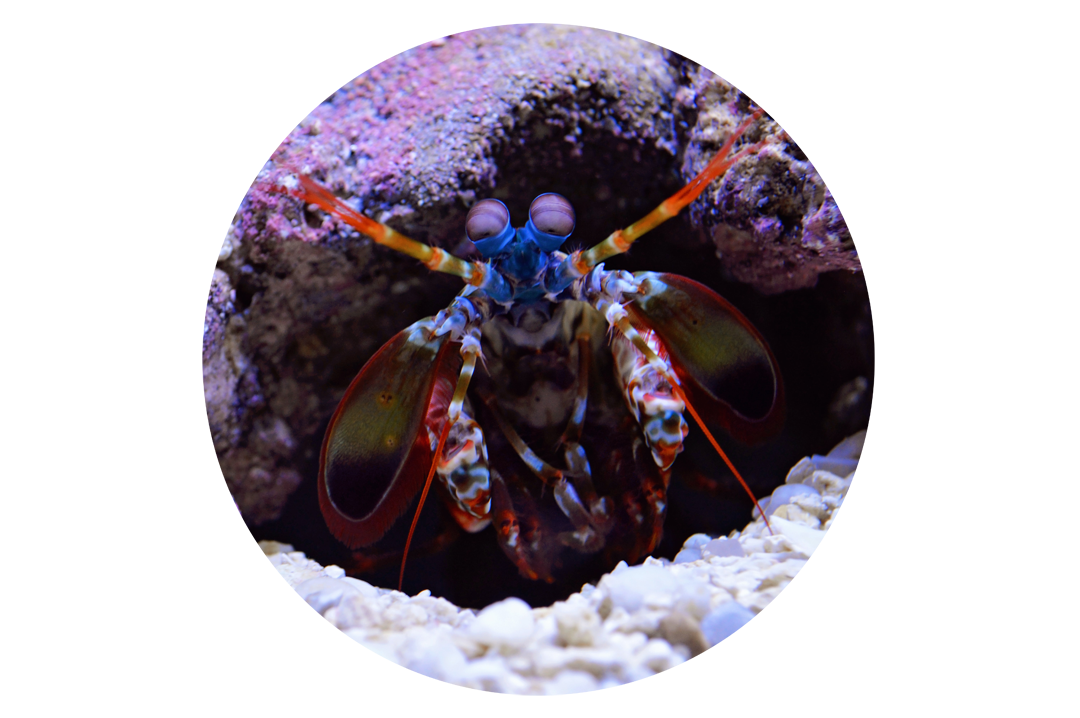 Because they strike so rapidly, they generate vapor-filled bubbles in the water between the appendage and the striking surface — known as cavitation bubbles. The collapse of these cavitation bubbles produces an intense shock wave and measurable forces on their prey in addition to the instantaneous forces of 1,500 newtons that are caused by the impact of the appendage against the striking surface. That’s 2.5k times the force of the shrimps own weight, creating temperatures in the water near the strike nearly as hot as the sun; if a human could do that they’d be able to punch through steel! This means that the prey is hit twice by a single strike; first by the claw and then by the collapsing cavitation bubbles that immediately follow. Even if the initial strike misses the prey, the resulting shock wave can be enough to stun or kill. At the very least their blunt clubs enable them to crack the shells of their prey into pieces. "Spearers" however, prefer the meat of softer animals, such as fish, which their barbed claws can more easily slice and snag. These magnificent creatures' appendages are even being studied as a micro-scale analogue for new macro-scale material structures!
Because they strike so rapidly, they generate vapor-filled bubbles in the water between the appendage and the striking surface — known as cavitation bubbles. The collapse of these cavitation bubbles produces an intense shock wave and measurable forces on their prey in addition to the instantaneous forces of 1,500 newtons that are caused by the impact of the appendage against the striking surface. That’s 2.5k times the force of the shrimps own weight, creating temperatures in the water near the strike nearly as hot as the sun; if a human could do that they’d be able to punch through steel! This means that the prey is hit twice by a single strike; first by the claw and then by the collapsing cavitation bubbles that immediately follow. Even if the initial strike misses the prey, the resulting shock wave can be enough to stun or kill. At the very least their blunt clubs enable them to crack the shells of their prey into pieces. "Spearers" however, prefer the meat of softer animals, such as fish, which their barbed claws can more easily slice and snag. These magnificent creatures' appendages are even being studied as a micro-scale analogue for new macro-scale material structures!
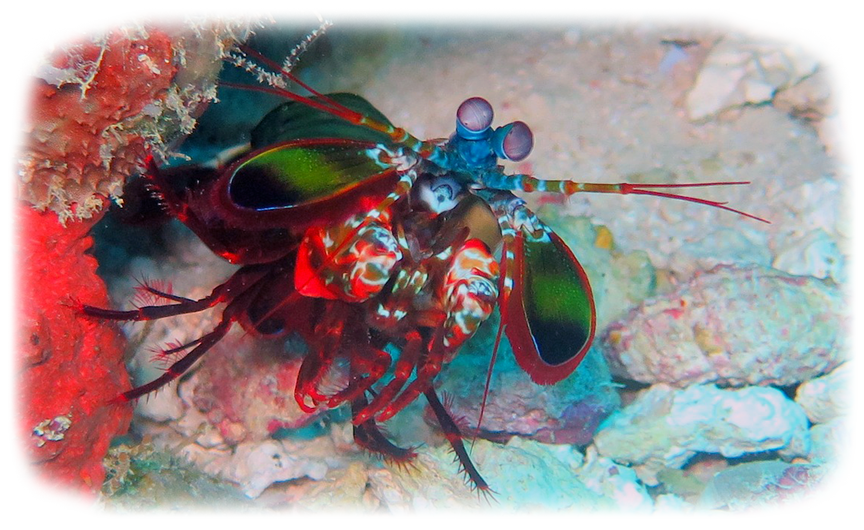 The mantis shrimp's eyes can move independently of each other - much like chameleons - but also have up to 4-5x the types of photo-receptor cells that humans possess. They are able to use "spectral tuning" too, tuning their sensitivity to wavelengths of color to adapt to their environment. They can see a special spiraling type of light called circularly polarized light that’s not been documented in any other animal, as well! This specific kind of eyesight means that they can see many more types of light, color, and wavelengths than we can, including UV light!
The mantis shrimp's eyes can move independently of each other - much like chameleons - but also have up to 4-5x the types of photo-receptor cells that humans possess. They are able to use "spectral tuning" too, tuning their sensitivity to wavelengths of color to adapt to their environment. They can see a special spiraling type of light called circularly polarized light that’s not been documented in any other animal, as well! This specific kind of eyesight means that they can see many more types of light, color, and wavelengths than we can, including UV light!
In mantis shrimps, the movement of the stalked eye is unusually free, and can be driven up to 70° in all possible axes of movement by eight eye-cup muscles divided into six functional groups. By using these muscles to scan the surroundings with the mid-band, they can add information about forms, shapes, and landscape, which cannot be detected by the upper and lower hemispheres of the eyes. They can also track moving objects using large, rapid eye movements where the two eyes move independently. With their complex compound eyes, they can see objects with 3 parts of the same eye. By combining different techniques, including movements in the same direction, the mid-band can cover a very wide range of the visual field, making them formidable predators. 